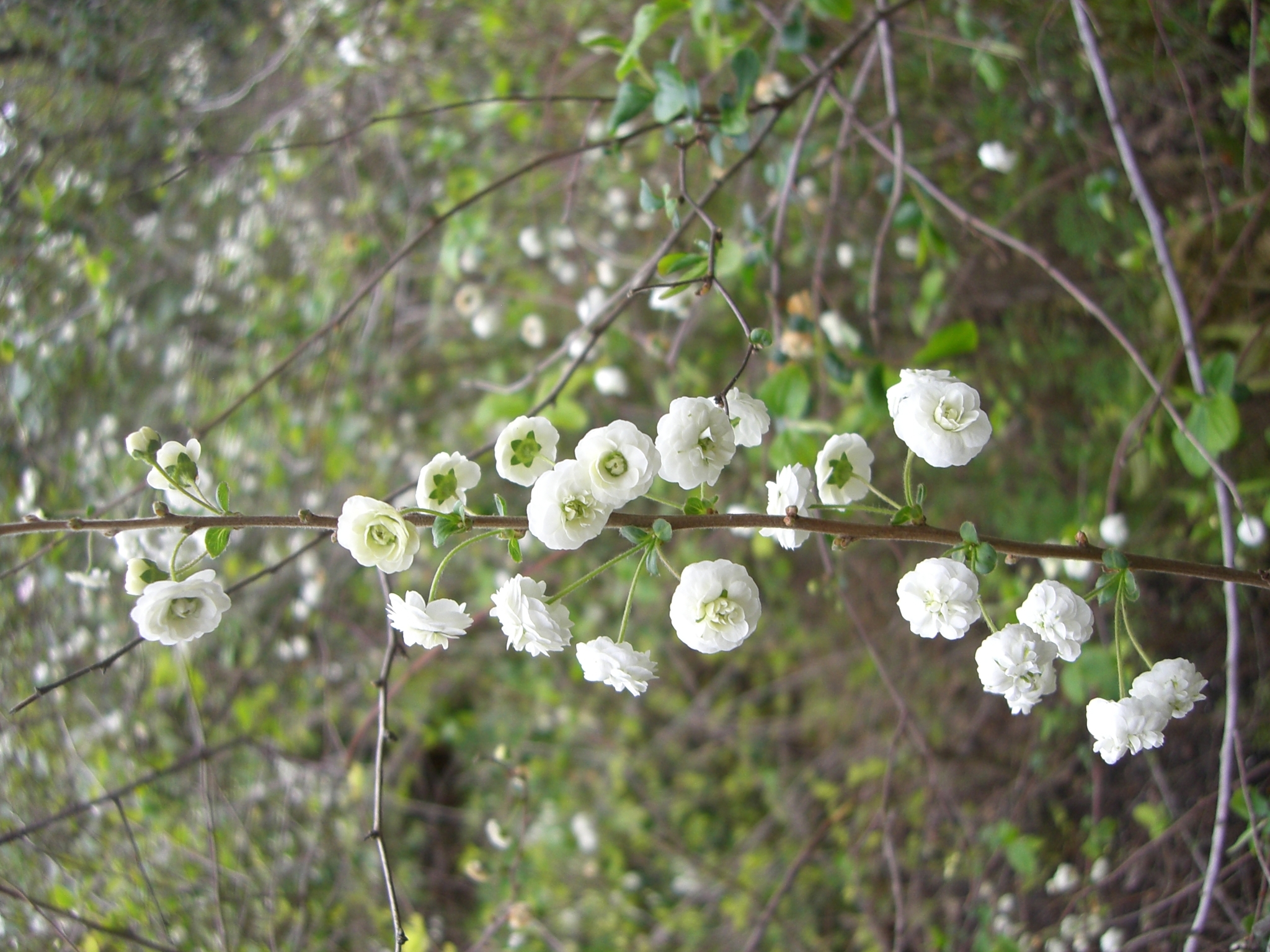
Greek speiraia, the classical name for plants used as garlands or wreaths.
Deciduous shrubs. Leaves alternate and simple with margins lobed, toothed or entire; stipules usually absent. Flowers bisexual or unisexual, in clusters. Sepals and petals 5. Stamens mostly more than 15. Ovary superior. Carpels 5. Fruit a cluster of dehiscent follicles, each containing 2-10 seeds. Grown mostly as ornamental shrubs, often with arching branches bearing clusters of small white or occasionally pink flowers.
About 90 northern temperate species from Eurasia and N America extending to Mexico and the Himalaya.
Seed and cuttings or occasionally by layers.
Leaf margins mostly either toothed or lobed, rarely entire; fruit a dehiscent follicle.
Source: (2002). Rosaceae. In: . Horticultural Flora of South-eastern Australia. Volume 3. Flowering plants. Dicotyledons. Part 2. The identification of garden and cultivated plants. University of New South Wales Press.

A rounded, dense shrub to 2 m or so tall with fine, arching, downy branches. Leaves oblanceolate, to about 4 cm long, 1.5 cm wide, entire or with a few teeth towards the tip, downy-haired below. Flowers prolific on the upper side of the shoots, white, in groups of 4-8; spring. [s. _arguta Zab.] a seedling of the cross s. _multiflora _ s. thunbergii.